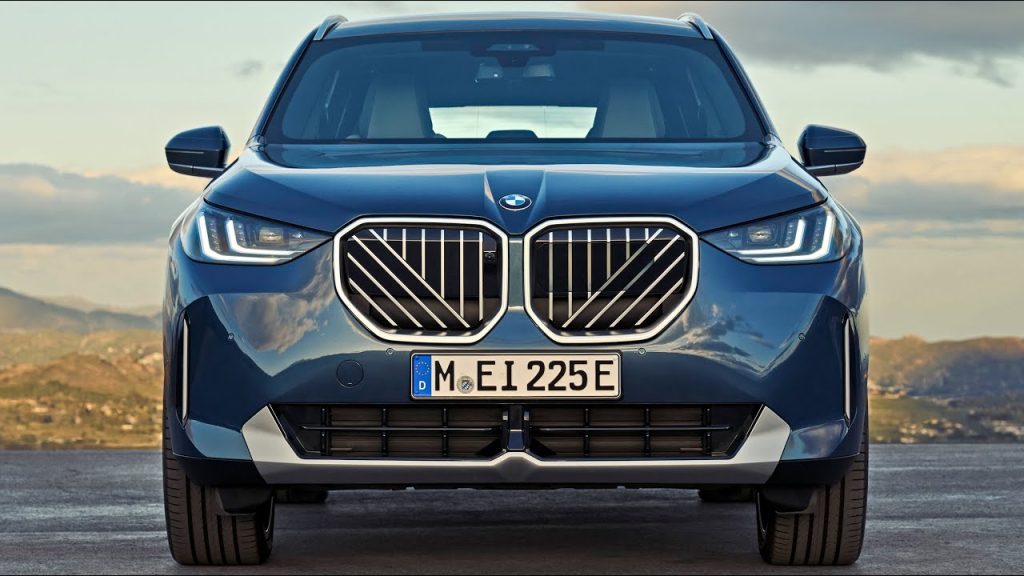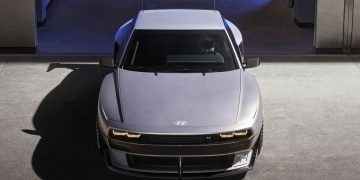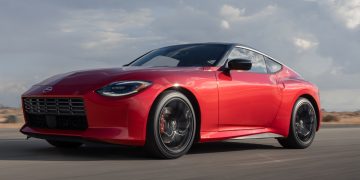Introduction
BMW (Bayerische Motoren Werke AG) is a name that resonates with performance, luxury, and precision engineering. Founded over a century ago, the brand has become one of the most iconic and recognizable in the automotive world. From humble beginnings as a manufacturer of aircraft engines to its evolution into a symbol of high-performance sedans, SUVs, and electric vehicles, BMW has always remained at the forefront of automotive innovation.
This article will take an in-depth look at how BMW became a global leader in the automotive industry, examining the brand’s history, technological advancements, and its continued influence on car culture worldwide. We will explore how BMW built its reputation and what it means to own a BMW, along with the impact the brand has had on the broader automotive landscape.
I. The Birth of BMW: Early Years and Foundation
BMW’s roots can be traced back to the early 20th century, when the company was established in 1916 as an aircraft engine manufacturer. However, it was the company’s move into automobiles that would eventually shape its legacy as a leader in engineering and design.
A. From Aircraft Engines to Automobiles (1916–1928)
- BMW was founded as an aircraft engine manufacturer during World War I, and its first major product was the BMW IIIa engine, which became famous for its performance in the skies.
- After the Treaty of Versailles (1919), which restricted Germany’s ability to produce military aircraft, BMW was forced to pivot and diversify into automobile production.
- The company’s first automobile, the BMW 3/15, was released in 1927, marking the brand’s entry into the automotive world.
B. BMW’s First Major Breakthroughs in Automobile Engineering
- The BMW 328 Roadster (1936) was a key model that defined the early years of BMW’s automobile production. Its lightweight design, advanced engineering, and racing success helped establish the brand’s reputation for performance and innovation.
- The BMW 327 was another early model that helped the brand establish its luxury credentials, particularly in the post-depression era.
II. World War II and Post-War Challenges
BMW faced significant challenges during and after World War II. The company’s factories were heavily bombed during the war, and it faced severe restrictions in its production capacity due to Germany’s post-war economic conditions.
A. The Impact of WWII on BMW’s Operations
- In 1945, BMW’s factories were dismantled by the Allied forces, and the company was forbidden from producing aircraft engines or military vehicles.
- BMW briefly shifted its focus to manufacturing household products such as kitchen appliances and bicycles to stay afloat during the early post-war years.
B. The Road to Recovery and Reinvention (1948–1954)
- In 1948, BMW was able to return to automobile production with the release of the BMW 501, a luxury sedan that marked the company’s return to the high-end automotive market.
- The BMW 507, introduced in 1956, was another notable model that helped to establish BMW’s status as a premium automobile manufacturer, although it was not initially successful due to high costs.
- Despite financial setbacks, BMW’s commitment to quality engineering began to take root again, setting the stage for future successes.
III. The Birth of the BMW 3 Series: Defining Performance and Luxury
The 1970s marked a transformative period for BMW, as the company focused on expanding its lineup and began a new chapter that would solidify its identity as the ultimate driving machine. This era also saw the rise of the BMW 3 Series, one of the most iconic and enduring models in automotive history.
A. The Introduction of the BMW 3 Series (1975)
- The first-generation BMW 3 Series (E21) was launched in 1975 and quickly gained attention for its perfect blend of performance, luxury, and practicality. It featured rear-wheel drive, responsive handling, and a well-balanced chassis.
- BMW’s marketing campaign promoting the 3 Series as “The Ultimate Driving Machine” resonated with consumers, and the model became a benchmark in the sports sedan segment.
- The success of the 3 Series helped BMW expand its market share, particularly in the U.S., where the brand gained a loyal following.
B. Evolution of the 3 Series: From E30 to G20
- The E30 (1982-1994) further cemented the 3 Series’ legacy, with iconic models like the M3 becoming synonymous with driving performance.
- The introduction of the E36 (1990–2000) and E46 (1997–2006) models marked BMW’s shift toward a more refined, tech-savvy luxury brand while maintaining its performance roots.
- The more recent G20 (2018–present) has integrated new technologies, such as advanced driver assistance systems, improved infotainment, and eco-friendly powertrains, while preserving the signature driving dynamics of its predecessors.

IV. The BMW M Division: High Performance and Motorsport Legacy
The BMW M Division, founded in 1972, became the company’s performance arm, responsible for developing high-performance versions of BMW’s production models. The M models, including the M3, M5, and M8, are considered some of the best-driving cars in the world.
A. The Birth of the BMW M1 (1978)
- The BMW M1 was BMW’s first standalone performance car, developed to compete in motorsport. Although it had limited production, the M1 helped solidify BMW’s image as a performance-oriented brand.
B. BMW M3 and M5: The Pinnacle of Performance Sedans
- The BMW M3 debuted in 1985 and became an iconic performance sedan, praised for its agility, precision handling, and raw power. The M3 has gone through multiple generations, with each iteration pushing the limits of performance and technology.
- The BMW M5, introduced in 1985, took the M Division’s approach to performance to the next level by blending high-speed performance with the luxury and comfort of a full-size sedan. It remains a top contender in the high-performance sedan category.
C. Motorsport and BMW’s Global Racing Legacy
- BMW’s involvement in motorsports, particularly in Formula 1, Le Mans, and touring car racing, has played a significant role in its development of cutting-edge technologies that filter down to its production cars.
- The performance-focused technologies developed in motorsport, such as lightweight materials, advanced aerodynamics, and active suspension systems, have become integral parts of BMW’s consumer vehicles.
V. Expanding the Range: SUVs, Coupes, and More
Over the years, BMW expanded its product range beyond sedans to include SUVs, coupes, and even electric vehicles. This diversification allowed BMW to reach a broader consumer base and meet the changing needs of the automotive market.
A. The BMW X Series: SUVs and Crossovers
- The BMW X5, introduced in 1999, was the brand’s first SUV and set the stage for the X series. The X5’s combination of luxury, performance, and practicality made it an immediate success.
- The X3, X6, and X7 followed, with each model targeting different segments of the growing luxury SUV market. The X series models feature cutting-edge technology and luxury appointments, while maintaining BMW’s focus on performance and driving dynamics.
B. The BMW 7 Series: Luxury and Technology at the Forefront
- The BMW 7 Series, launched in 1977, was the brand’s flagship luxury sedan, competing with the likes of the Mercedes-Benz S-Class and Audi A8.
- The 7 Series has always been a testbed for BMW’s most advanced technologies, including innovative infotainment systems, semi-autonomous driving features, and lightweight construction materials.
VI. Embracing the Future: Electric Vehicles and Sustainability
As the automotive industry shifts towards electrification, BMW has embraced electric mobility through its i Series, hybrids, and electric vehicles. The company is positioning itself for the future by integrating sustainable practices into every aspect of its operations.
A. The BMW i Series: Pioneering Electric Mobility
- The BMW i3, launched in 2013, was BMW’s first fully electric vehicle. Its distinctive design, sustainable materials, and innovative use of carbon fiber made it a standout in the electric vehicle market.
- The BMW i8, a hybrid sports car, was also introduced alongside the i3, combining cutting-edge technology with sustainable performance.
- The BMW iX3, i4, and iX represent the next phase of BMW’s commitment to electrification, with an increasing focus on performance, range, and luxury.
B. Sustainability and Carbon Neutrality
- BMW has committed to achieving carbon neutrality by 2050, and the company is already making strides toward this goal by adopting renewable energy in production and focusing on sustainable materials in its vehicles.
- The company’s new production facilities are being built with green technologies, including energy-efficient production lines and waste reduction systems.
VII. BMW’s Cultural Impact: A Symbol of Status and Performance
BMW’s impact on car culture cannot be understated. Over the years, BMW has become more than just a car brand; it’s a symbol of luxury, status, and the pursuit of performance.
A. The BMW Enthusiast Community
- The global BMW enthusiast community has been instrumental in promoting the brand’s performance and culture. From car clubs to track days, BMW enthusiasts take great pride in their vehicles and the driving experience they provide.
B. BMW in Pop Culture
- BMW has also carved out a significant place in pop culture, particularly in music, movies, and sports. From the iconic BMW 3 Series in movies like The Transporter to rappers like Jay-Z and Kanye West referencing the brand in their lyrics, BMW is synonymous with success and prestige.
VIII. Conclusion: BMW’s Legacy and Future in the Automotive World
BMW’s rise from a small aircraft engine manufacturer to one of the most prestigious car brands in the world is a testament to its commitment to innovation, performance, and luxury. Over the decades, BMW has continuously evolved, embracing new technologies, expanding its product lineup, and shaping the future of the automotive industry. As the company continues to lead the way in electric mobility, autonomous driving, and sustainability, BMW’s legacy will endure for generations to come.


































Discussion about this post